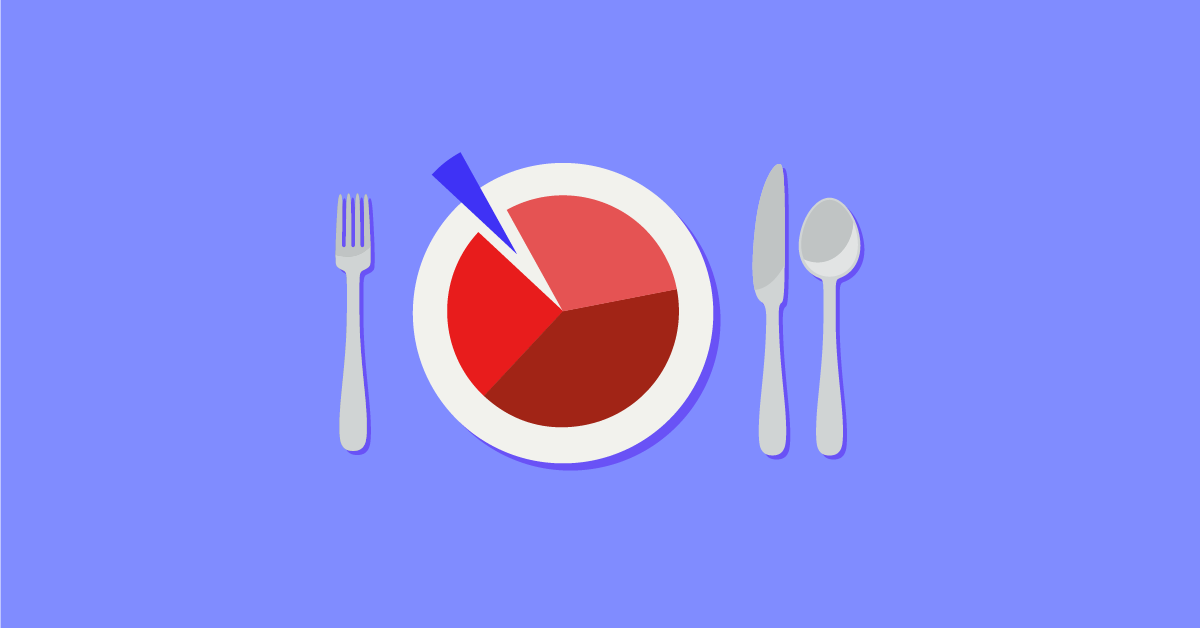
The restaurant industry is not for the faint of heart. While passion is the spark that inspires restaurateurs to pursue their dreams, profit margins determine whether or not those dreams are a sustainable business.
Unfortunately, profit margins are dwindling across the restaurant industry. Two decades ago in Philadelphia, for example, restaurant profit margins stood at a healthy 15-20%. Today, profit margins in this foodie town have shrunk to between 4 and 7%, which is on par with the national average.
Alas, we’re not here to depress you with statistics about low restaurant profit margins. Instead, we’re here to help you combat this problem with a complete guide to sustainably grow profits so that your restaurant can thrive. In this guide, you’ll learn:
- What the average restaurant’s profit margins are
- How to calculate gross profit
- How to calculate net profit
- Why restaurant profit margins are so low
- Average profit margins by restaurant type
- How to improve restaurant profit margins
Reinvent your business for the future
While the hospitality sector reopens across North America, owners and operators face a whole new set of challenges. Download our free playbook and learn how to build a more resilient business post-pandemic.
What is the average restaurant profit margin?
While there is no one-size-fits-all answer to that question, Restaurant Resource Group claims that, on average, restaurant profit margins are between 2% and 6%, with full-service restaurants at the lower end of the spectrum and limited-service (or quick service) restaurants at the higher end.
Before we dive into why restaurant profit margins are low and how you can improve yours, we need to distinguish between two types of profit margins: Gross profit and net profit.
What is gross profit?
Your gross profit is the difference in value between the selling price of a dish and the cost of the ingredients and materials used to make a dish (otherwise known as the cost of goods sold, or COGS).
For financially viable restaurants, gross profit hovers around 70%, meaning that for every $100 a guest spends at your establishment, $70 is gross profit.
How to calculate gross profit
To calculate your restaurant’s gross profit, you need to subtract the total cost of goods sold (COGS) for a specific time period from your total revenue (your total food, beverage, and merchandise sales).
For example, let’s say Johnny’s Burger Bar’s total sales from July to September 2022 was $1.25 million and its cost of goods sold was $400,000.
To calculate gross profit, apply this formula:
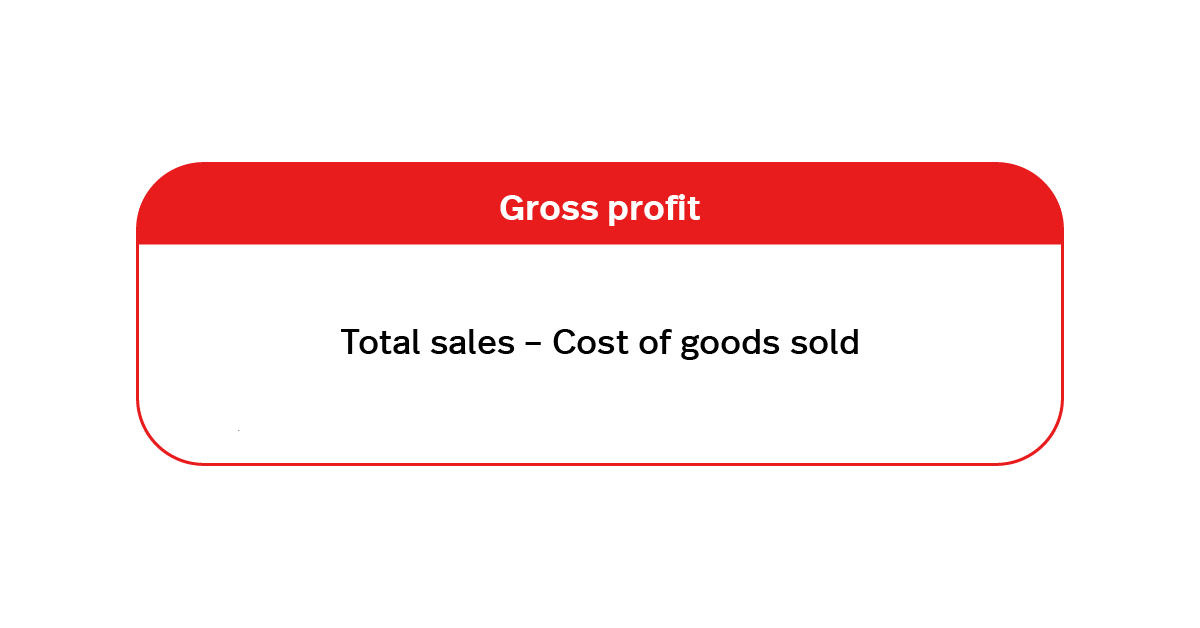
Gross profit = (1,250,000 – 400,000) / 1,250,000
Gross profit = 850,000 / 1,250,000
Gross profit = 0.68
Johnny’s Burger Bar’s gross profit as a percentage is 68%, meaning that for every $100 a guest spends at their establishment, $68 is gross profit that can be used to pay for operating expenses.
What is net profit?
Your net profit is the amount leftover from the gross profit after you deduct operating expenses like payroll, rent, utility bills, ingredients, and equipment leasing costs.
How to calculate net profit
To calculate net profit margin as for a certain time period, you need the following information:
- Sales revenue
- Gains
- Expenses
- Losses
For example, let’s say Johnny’s Burger Bar, a quick-service burger restaurant, has $1.25 million in revenue, $50,000 in gains, and $1.2 million in expenses from July to September 2022.
Net profit = (1,250,000 + 50,000) – 1,200,000
Net profit = 100,000
How to calculate net profit percentage
To calculate net profit as a percentage, apply this formula:
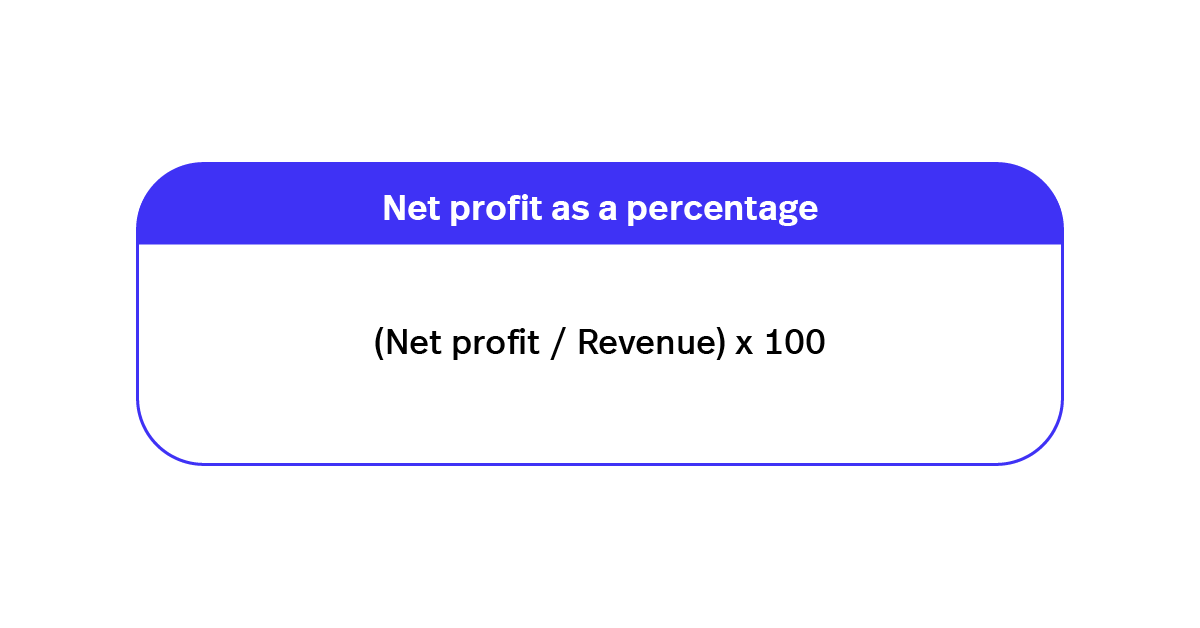
Net profit as a percentage = (100,000 / 1,250,000) x 100
Net profit as a percentage = 0.08 x 100
Net profit as a percentage = 8%
Johnny’s Burger Bar’s net profit margin is 8%. For every dollar a customer spends, they’re keeping 8 cents as profit.
Why are restaurant profit margins so low?
While there are many factors that contribute to low profit margins in the restaurant industry, one of the main reasons are three major expenses commonly referred to as the “Big Three”.
- Cost of goods sold (COGS)
- Labor
- Overhead
As a general rule, one-third of a restaurant’s revenue is allocated to cost of goods sold, and another third to labor expenses. The remaining revenue must cover overhead expenses like utility bills and rent.
Once all expenses are paid, restaurants are typically left with between only 2 and 6% in net profit.

Note: COGS, labor and overhead expenses can vary greatly depending on a restaurant’s type and location. As such, there are certainly outliers (that’s to say, restaurants with revenue lower than average and restaurants with far above average profit) that impact the average. We recommend researching average profit margins for your restaurant type and setting a goal to have average-or-better profit margins year over year.
Average profit margins by restaurant type
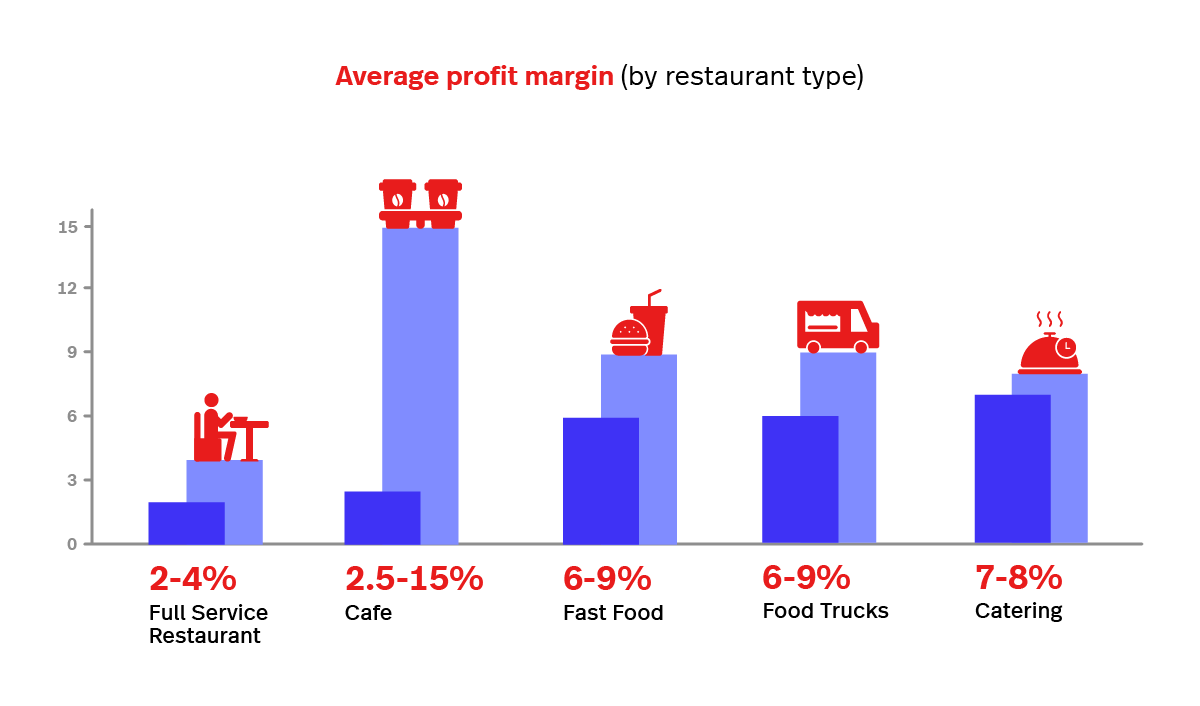
Full service restaurant profit margins
That 2-6% profit margin mentioned above generally refers to full service restaurants (FSRs), which are establishments that generally include kitchen staff, managers, servers, bartenders and a host, at minimum. However, these numbers can vary greatly depending on factors like restaurant size, price range, turnover rates, location and more.
Cafe profit margins
Cafes typically have profit margins that range from 2.5-15%. This higher margin is often attributed to their focus on specialty coffee beverages, pastries, and light meals, which can be priced at a premium compared to traditional full-service restaurants. However, the actual profit margin can still vary depending on factors such as location, menu offerings, operational efficiency, and competition in the area.
Fast food restaurant profit margins
This number depends on factors like if the location is chain-owned, franchised or independent, but the average profit margin for a fast food restaurant or quick service restaurant (QSR) is around 6-9%. The restaurant profit margin for fast food or quick service restaurants is higher than a full service restaurant because they tend to need less staff, use less expensive ingredients (more frozen and pre-prepared items) and have a higher turnover rate than a full service restaurant.
Food truck profit margins
Food trucks will generally carry similar food cost numbers as a brick-and-mortar restaurant, but they benefit from lower overhead costs including rent, insurance, staff and utilities. And while bad weather can hurt a day’s sales, that can be made up for in rental fees for events. Like fast food and QSRs, the average food truck profit margins are around 6-9%.
Catering profit margins
Similar to food trucks, catering businesses benefit from low overhead costs but similar food costs when compared with an FSR. While a high-end catering business can pull in profits of 15% or more, the overall average profit margin for a catering business is 7-8%.
How to improve restaurant profit margins
There are two ways you can approach this problem: by increasing sales volume and by decreasing overhead expenses.
While there are many tactics that can help you increase sales volume and decrease expenses, we’ve put together our list of the most accessible ways to do so.
How to increase your restaurant’s sales
Let’s start by tackling how you can increase your restaurant’s sales volume. Here are four things you can do to achieve just that:
- Optimize your menu pricing
- Update your menu layout
- Provide better sales training for your servers
- Increase your traffic through marketing
- Improve your table turnover
- Adding more seating
1. Optimize your menu pricing
A simple way to increase profit margins at your restaurant is to optimize prices on your menu. To do that, you’ll first need to know each of your dishes cost per serving and food cost percentage.
For a comprehensive breakdown of how to calculate your cost per serving, current food cost percentage, and ideal food cost percentage, read our guide to calculating food costs.
The average restaurant needs to keep food cost percentage between 28% and 35% in order to run a financially healthy operation. While this number doesn’t directly translate to profit margin, it does give you wiggle room to account for overhead expenses like labor, rent, and utilities.
If the food cost percentage of your menu items falls above the 28-35% range, you have been underpricing those items. Raise your prices so that they fall within this range.
Brian Cairns, Founder of ProStrategix Consulting, says that the biggest mistake he sees restaurant owners and operators make when it comes to menu pricing is that they don’t account for overhead expenses.
“Savvy restaurant owners and operators price each of their menu items to account for overhead expenses—that is, fixed and variable costs that aren’t associated with the meal per se. Things like utility bills, rent, and labor costs,” says Cairns.
To account for your restaurant’s overhead expenses in the price of your meals, Cairns suggests tallying up how much those expenses cost you per month and dividing that amount by the number of menu items you have.
That number is how much you could increase the cost of each menu item to cover your overhead expenses.
If you worry that increasing prices will scare customers away, you can alternatively increase profit margins by decreasing food costs. Do this by finding cheaper vendors for ingredients (but don’t sacrifice quality!) or serving smaller portion sizes.
2. Update your menu layout
Also referred to as menu psychology, menu engineering is the deliberate and strategic construction of restaurant menus.
Menu engineering combines psychology, data and design to increase guest profitability. Some sources say that menu engineering can increase profits by as much as 20%.
Contrary to popular belief, menu price optimization (what we covered above) and menu engineering are not the same. However, it’s essential to know the cost, profitability and popularity of your menu items to successfully engineer the menu.
Here’s why.
The objective of menu engineering is to assure that every item featured on your menu is popular and profitable. This assures that, no matter what guests order, it’s good for your bottom line.
Analyze your menu item sales
Start by analyzing your restaurant’s sales reports for a specific timeframe. You want to find which menu item’s:
- Sell the most
- Sell the least
- Highest profit
- Lowest profit
If you’re using Lightspeed, you can find all that information in your Product Sales Report. Follow these steps to access the report:
- From Lightspeed’s Restaurant Manager, click Reports.
- Select Product Reports.
- Set the date range you want to pull sales data for in the top right corner.
- Filter the list by Order Amount and Profit.
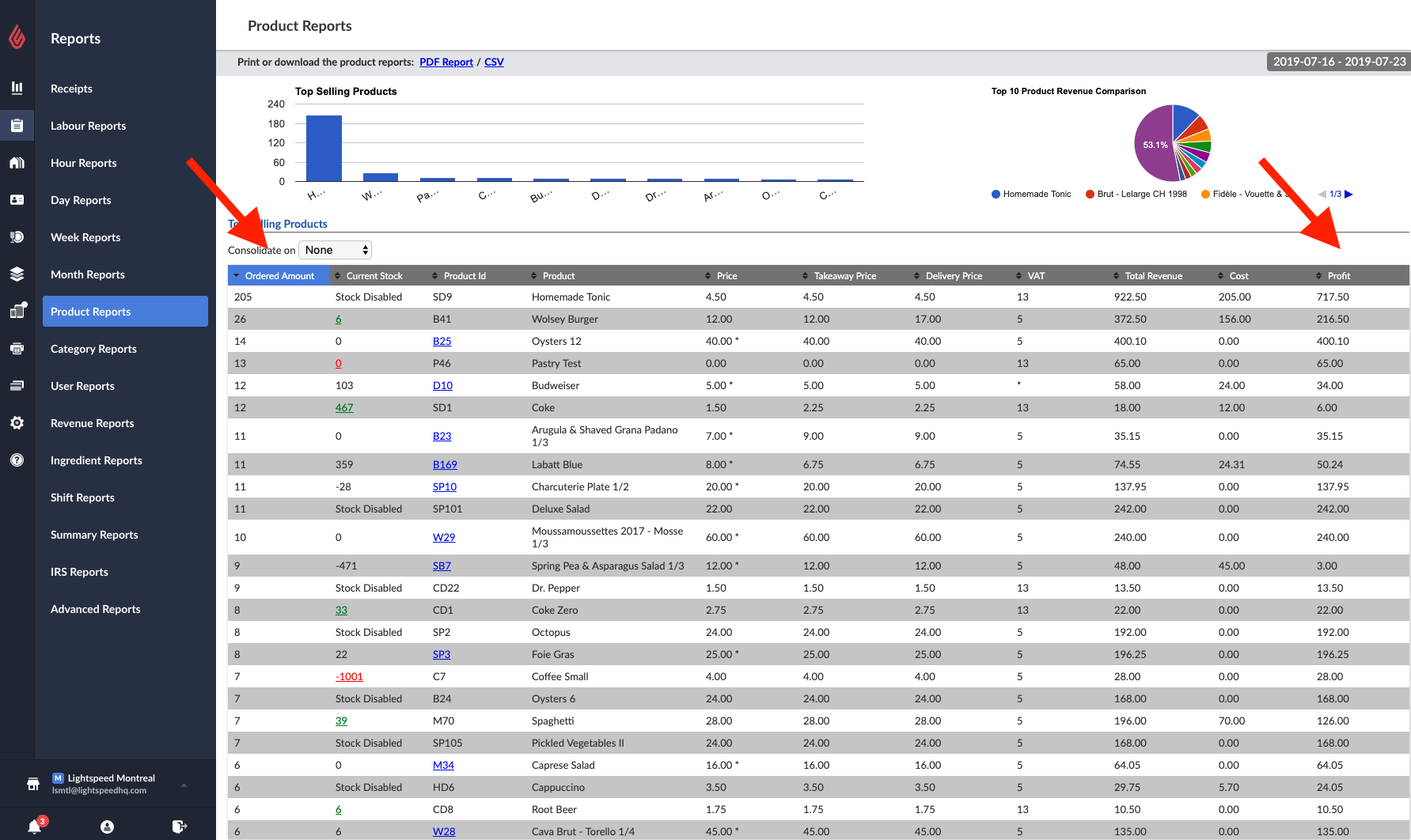
Create a menu matrix
Next, categorize your menu items into four categories:
- Stars: High-profit, popular menu items.
- Cash cows: Low profit, popular menu items.
- Puzzles: High-profit, low popularity menu items.
- Dogs/Duds: Low-profit, low popularity menu items.
We call this a menu matrix. Here’s what it should look like once you’re done.
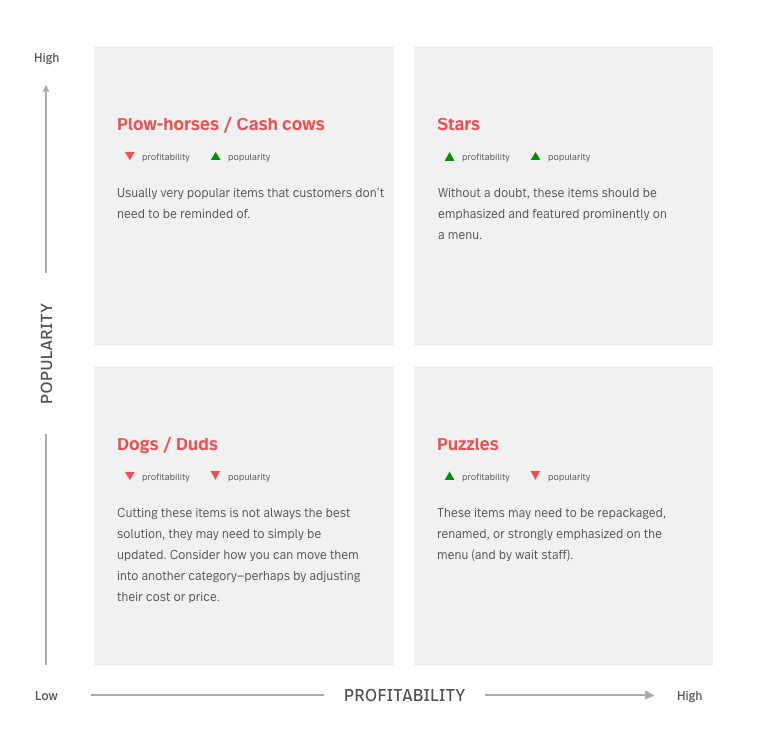
A menu matrix helps you visualize which dishes are most important for your restaurant’s revenue.
Your goal is to use your menu matrix to inform your menu design and draw as much attention as possible to your stars, cash cows, and puzzles since they’re your most popular, high-profit dishes.
Consider phasing out unpopular, low-profit items from your menu to keep your guest’s focus exclusively on high-profit items.
Update your menu layout
There are plenty of design tricks menu engineers use to draw attention to high-profit dishes. In fact, applying menu engineering design tricks can increase the sales of an item by up to 30%.
We’ve listed all the best menu engineering and design tricks in our Ultimate Guide to Restaurant Menu Design. Check it out for an A to Z walkthrough.
3. Provide better sales training for your servers
Your waitstaff’s ability to sell food and beverages is the key to making money in your restaurant. Good managers understand that their servers aren’t just order-takers. The difference between a good server and a great server is their ability to upsell to diners. This includes these tasks:
- Encourage appetiser sales
- Make the mains matter—full meal sales and a la carte side items like side salads or soups
- Don’t forget to sell dessert
The key to server training lies in coaching them into a natural delivery, allowing them to sample the new products, and getting them enthusiastic about what they’re selling. When your server is excited about the food and drink, it carries over to your diners.
Investing in efficient technology also gives staff more time to spend on upselling which is something Lightspeed customer Mildreds and Mallow has seen.
“I won’t implement technology just because it’s a trend. I’ll only implement it if it will improve my guest experience, and this could be different things. It could mean making sure that the waiter has enough time to upsell the correct recommendations, which will help me financially and I’ll get extra sales.” explained Dominique Fernandes, Head of Operations at Mildreds and Mallow.
Increase sales by increasing cover averages
Restaurant guests are typically referred to as covers—and increasing the amount spent per cover increases your overall sales. Servers can boost your restaurant’s cover average by upselling to customers. Consider offering a prize to the server with the highest cover average per shift.
Upselling doesn’t stop with beverages
Adding a shareable appetizer to a table, side salads or soup before the main meal or a dessert are all ways that your servers can add to a customer’s check—and sales revenue to your bottom line.
Investing the time to train your dining room staff on your menu offerings, allowing them to taste the dishes and encouraging them to select their favorite to upsell to customers can go a long way toward increasing your sales.
But extra sales per customer doesn’t help if you don’t have a steady stream of customers.
4. Increase your traffic through marketing
The keys to success lie in both establishing a regular customer base and enticing new customers to walk through the door. If your restaurant is fortunate enough to have a regular customer base, consider rewarding their loyalty with special programs.
Some establishments have spending thresholds, where the diner receives a discount or a free item for reaching a specific dollar amount. Other places offer bonus gift cards with a certain purchase amount, or “happy hour” specials for regulars. With Lightspeed Loyalty, you can create a points-based loyalty program so that your customers can earn points for dining with you, and redeem them for rewards. You can also send custom, automated email marketing campaigns to promote your special offers and give customers a reason to come back.
Rewarding regular guests is a great way to build your loyal customer base and increase positive word of mouth. But in order to do this, you’ll need to get new customers in the door first—and turn them into fans.
A solid restaurant social media marketing strategy is an essential part of a comprehensive overall marketing plan. Rounding out your digital presence with strong social accounts and quality content can make or break a sale. The best part? It’s free.
Social media platforms are constantly evolving; always developing new tools for users to engage with, be it stories, reels, or going live. These new features can seem intimidating to begin with, but they could turn out to be the best way to engage with your customers. Testing new features is a great way to discover what your customers want to see from you.
Here’s more advice on social media marketing, but to get started, here are 5 social media best practices:
- Find your niche, but don’t be afraid to test
- Turn your hand to video
- Re-share user-generated restaurant social media content
- Celebrate your staff on social media
- Post consistently
5. Improve your table turnover
Table turnover is the timeframe that a guest occupies a table at your restaurant from their arrival to departure. The more customers you serve per service, the more revenues you’re positioned to make.
If you want to maximize your revenues per service, your ultimate goal is to reduce the time a guest occupies a table (without making guests feel rushed) and maximize how much they spend.
It’s a delicate balance, to be sure. Serve a customer too slow and you’re missing out on serving a higher volume of customers. Serve a customer too fast and you risk making them feel rushed and unappreciated.
The best way to speed up your table turnover and serve more customers per service is to equip your restaurant’s front of house (FOH) and back of house (BOH) staff with tools that speed up their workflows.
Seat guests faster
Seating your guests faster is the first step to serving more guests per service.
Depending on your restaurant type, your host is the first touchpoint a guest has once they arrive at your establishment. The last thing you want is for there to be a bottleneck at the front door.
To prevent this from happening, Lightspeed developed an intuitive, adjustable floor plan that enables hosts to know in real-time which tables are free, check-in reservations, and seat guests more efficiently.
Serve guests faster
Serving your guests faster is dependent on whether or not your kitchen and wait staff are in sync.
With Lightspeed, wait staff can reduce food wait times by using it’s built-in tableside ordering feature, along with a kitchen display system (KDS).
Rather than writing down the orders of the tables they’re serving on a paper and manually sending each of them to the kitchen, tableside ordering enables wait staff to take orders directly at a guest’s table and send them immediately to the appropriate kitchen workstation.
For instance, if a guest orders a cocktail and an entree, both orders are automatically filtered by type (cocktail + entree) and sent to the bartender and cook’s kitchen display system.
The kitchen display system organizes orders chronologically, color-codes them and even has audible alerts for new incoming orders. All of these features make it easy for kitchen staff to get orders ready faster.
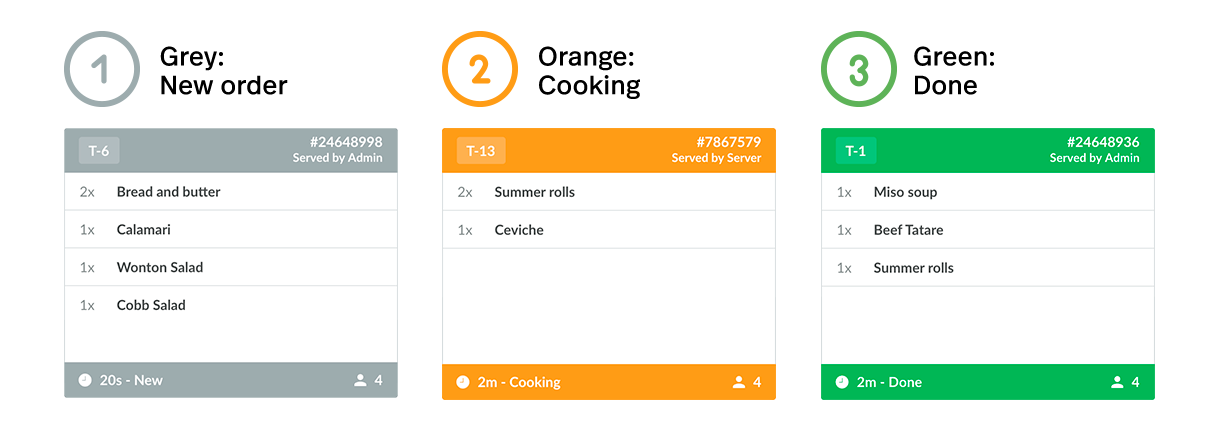
Once an order is ready to be run to a table, kitchen staff can simply send that table’s waiter a notification. The result is less back-and-forth between the front and back of house, faster service and faster table turnover.
Shorten your menu
Offering a short menu with lunch specials designed to get diners in and out quickly is a great way to introduce new customers to your restaurant while helping you turnover tables quickly. Make sure that the menu items that you choose can be quickly executed, and consider offering customers their meal for free if it takes longer than 20 minutes.
Process payments faster
The final step to improving table turnover is by processing payments faster. To do that, Lightspeed’s adjustable floor plan features color indicators that let wait staff know which stage of their meal a table is at.
Rather than ask whether or not a guest is ready to pay (and risk making them feel rushed), wait staff can know before approaching the table.
Equipped with that information, wait staff can approach a table when it’s marked as ready to pay, split the check however the guests want and accept payments right from their table.
Customers appreciate the efficient service and owners, operators and managers appreciate turning their tables faster.
Another way to process payments faster? Using Lightspeed Payments. Lightspeed Payments lets you close bills directly at the table from your payment terminal. Here are more benefits of Lightspeed Payments:
- Settle payments fast–select any table number among all open tables.
- Instantly sync payment status–get real-time communication between your terminal and ePOS.
- Simple bill-splitting–split bills among groups and let customers pay at different times.
- Save your staff time–collect tabs and reauthorise payments at the bar.
6. Add more seating
If your restaurant is fully booked every service (and if you have enough available square footage in your dining room), you could consider adding additional seating or tables. This is a quick way to increase the volume of customers you serve per service.
If you optimized your menu pricing and design like we mentioned earlier, you can also substantially increase your sales per service.
Before you add tables to your restaurant floor plan, you first need to consider your guest’s comfort level, restaurant type and industry standards for square footage per guest.
Average square footage per guest
- Fine dining: 18 to 20 square feet
- Full-service dining: 12 to 15 square feet
- Counter service: 18 to 20 square feet
- Fast food dining: 11 to 14 square feet
For a more in-depth look at square footage per customer, check out tip 3 in our blog on how to lease the perfect restaurant space.
To add more seats to existing tables in your Lightspeed floor plan, follow these steps.
- Choose the floor you want to edit In Lightspeed Restaurant.
- Select Edit from the top of the Tables screen. A settings panel will appear.
- Select the table that you want to add seats to.
- Add seats by scrolling the Chairs slider to the right.
- Select Save > Done to finalize your changes.
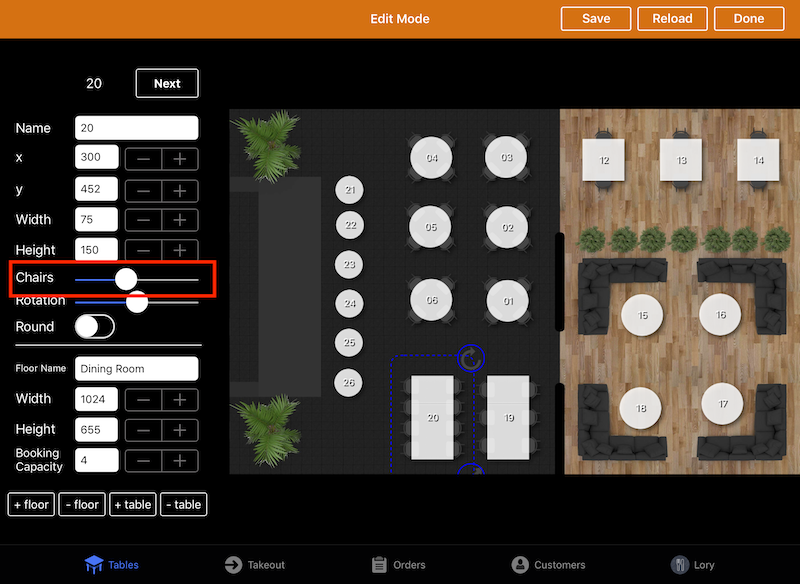
In this example, we added two chairs to table 20.
When you can seat more guests, or take larger parties thanks to extra seating, you’ll make more money with the same overhead.
How to decrease overhead expenses
The next way to improve your profit margins is by reducing ongoing expenses like labor and utilities.
- Improve your employee scheduling
- Reduce food waste
- Lower utility bills
1. Improve your employee scheduling
To reduce labor costs while maximizing your revenue per service, we suggest leveraging your restaurant’s sales and employee data to schedule the optimum number of employees per service. With Lightspeed Advanced Insights, you can perfect your workforce planning thanks to heat maps that show revenue per hour and peak hours.
Schedule too many servers during slow business hours and you risk spending too much on labor costs. Schedule too few servers and you risk turning tables slower, spreading your staff thin and weakening the quality of your customer experience.
Your goal when planning your employee schedule is to assure that your restaurant is sufficiently staffed to meet customer demand at any time of the day.
With restaurant point of sale analytics integration Tenzo, you can leverage AI to predict the exact number of staff you will need at each hour, even taking into account contextual factors such as weather and public holidays. You can also clearly identify which of your servers generate the most revenue, as well as your restaurant’s busiest and slowest business hours.
Equipped with that information, you can schedule your top-selling servers during your busiest business hours, maximize your revenue per service and minimize your labor costs.
With restaurants spending about 30% of their monthly revenue on labor (the largest operating expense only second to cost of goods sold), optimizing your employee scheduling is an excellent and easily accessible way to increase revenues and decrease ongoing expenses.
2. Reduce food waste
A report from the Boston Consulting Group (BCG) estimates that, by 2030, food waste will account for approximately $1.5 trillion in lost revenue for restaurants.
Remember, approximately one-third of a restaurant’s revenue is allocated to cost of goods sold (COGS). If you end up throwing that food away, you’re effectively losing money that could have been profit or used to cover other expenses.
The World Resources Institute found that for every $1 a restaurant invests in reducing food waste, they save an average of $7. That type of return on investment is certainly something you should consider if your goal is to improve your profit margins.
To avoid food waste, restaurateurs can adjust their menus by restricting the number of dishes on sale and by reusing the same ingredients for several recipes. To reduce the amount left on the plate, restaurateurs can also reduce portions, or let customers choose from a variety of dish sizes.
To adjust their food stocks, restaurateurs can also use their ePOS to plan their purchases according to demand and reduce food waste. An advanced inventory tool has the advantage of being able to plan ahead for the right quantities based on the number of diners per shift and the given time period. With an automatic replenishment tool, restaurateurs don’t have to worry about manually managing their inventory.
3. Lower utility bills
Did you know that restaurants consume an average of five to seven times more energy per square foot than other commercial buildings? For quick-service restaurants and other high-sales volume establishments, it’s up to ten times more.
And that consumption adds up to higher utility bills.
Tim Powell, Managing Principal at food service management consulting firm Foodservice IP, says that fixed costs like utility bills account for up to 33% of a restaurant’s sales.
Investing in eco-friendly kitchen appliances and lighting can contribute to lower utility bills, which leaves more revenue from sales left in the bank.
ENERGY STAR certified foodservice equipment can help you cut down on how much energy your restaurant uses. While the initial cost of the investment may feel steep, the long-term savings on your utility costs more than account for it.
The benefits of eco-friendly appliances
- Consume less energy
- Lower utility bills
- High return on investment
Businesses that actively reduce their food waste and environmental footprint typically have margins 3.3% higher than businesses that don’t. If you want to learn more on this topic, check out our blog How Reducing Your Environmental Footprint Yields Huge ROI where we dive deeper into the financial benefits of eco-friendly business practices.
Top takeaways for improving restaurant profit margins
The restaurant industry is a tough business to succeed in.
Use the tips we covered here to increase your sales volume, decreasing your expenses and grow your profit margins. In summary, our tips were:
- Optimize your menu pricing so that each dish you serve is beneficial to your bottom line.
- Update your menu layout to sell more of your most profitable dishes.
- Train your staff to maximize sales as much as possible (but without sacrificing quality of service).
- Offer a loyalty program and promote your restaurant on social media channels.
- Improve your table turnover and serve more guests per service.
- Adding more seating to increase revenue per service.
- Improve your employee scheduling to both reduce labor expenses and maximize sales per service.
- Reduce your food waste and environmental footprint to save on COGS and utility bills.
While there’s no one-size-fits-all solution for increasing your profit margins, the above tactics are tried and true ways to do so. Try to apply them to your establishment and you’ll be in a great position to stay in the black year after year.
Maximize your profits with software
With Lightspeed’s restaurant POS, you can offer tableside ordering, start a loyalty program and view reports to see what’s working. Chat with one of our restaurant experts to see how software can help you streamline your operations and make informed decisions.

News you care about. Tips you can use.
Everything your business needs to grow, delivered straight to your inbox.



